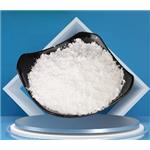Ammonium bromide is soluble in water and alcohol and is not particularly hazardous under normal conditions.
Ammonium bromide is a weak acid with a pKa of approximately 5 in water. It is an acid salt because the ammonium ion hydrolyzes slightly in water.
NH4Br(s) → NH+4(aq) + Br-(aq)
It decomposes to ammonia and hydrogen bromide when heated at elevated temperatures.
Colorless rhombic crystal; odor of ammonia; sublimes at 60°C; very soluble in cold water; decomposes in hot water; slightly soluble in alcohol; insoluble in acetone.
manufacture of photographic films, plates, and papers; in process engraving and lithography; fireproofing of wood; in corrosion inhibitors.
Ammonium bromide is a colorless crystals used for its bromide ion, it was also used as a halide in collodion formulas and as a restrainer in alkaline developers.
Ammonium bromide can be prepared by the direct action of hydrogen bromide on ammonia.
NH3 + HBr → NH4Br
ChEBI: An ammonium salt composed of ammonium and bromide ions in a 1:1 ratio.
White odorless crystals or granules that become yellow upon exposure to air. Sinks and mixes in water.
Bromine trifluoride reacts explosively with the following Ammonium bromide, ammonium chloride, ammonium iodide [Mellor 2 Supp. 1:165 1956].
INHALATION: Dust irritating - disturbed behavior, sedation. EYES: Slight irritation. SKIN: Slight irritation only with repeated or prolonged contact. INGESTION: Weakness, nervousness, anorexia, confusion, hallucinations, drowsiness, irritability, ataxia, vertigo, skin rash.
Special Hazards of Combustion Products: Material decomposes into N 2 and HBr or Br 2 under extreme temperatures.
Flammability and Explosibility
Non flammable
It crystallises from 95% EtOH and is slightly hygroscopic.


